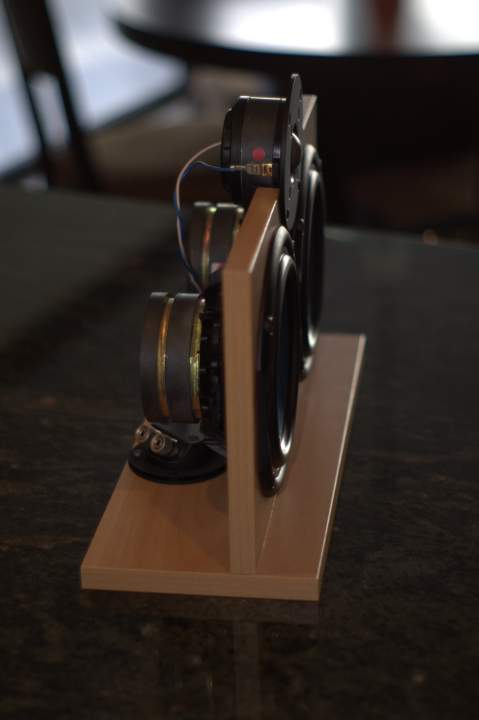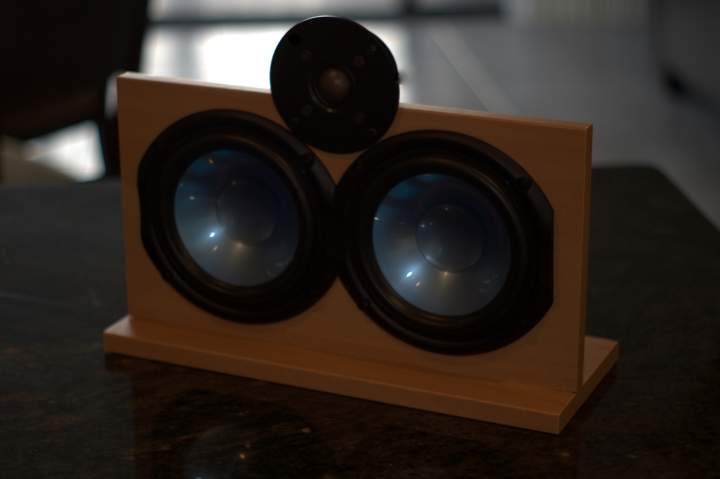Recently I set out to reap the benefits of traditional open back speakers in a small, inexpensive, center channel speaker for Home Theater applications. Aside from the low cost, sonic goals also included ultra clear and natural sounding movie dialogue, relatively high efficiency, and a small footprint. Due to the information contained in most center channel material, an uber-flat frequency response was not necessarily a major priority of this project; instead giving way to the goal of achieving unconstrained, non-tubby spoken dialogue that is often not prevalent in many cabinet based CC systems. A secondary goal was aesthetic in nature, since CC speakers are always in plain sight during a movie.
The SxyCenter was going to be driven by a small Tripath stereo amp in a bi-amped fashion. In this case, a Dayton DTA-100 was used. Since one of the project goals was low cost, I decided to take advantage of a current buyout driver, namely the Brazilian made Bravox 6.5" 12 ohm poly driver at around ten bucks per unit. They have nice poly cones and a rather impressive (and silent) plastic basket assembly. My drivers total Q measured between .55 and .60 which would roughly hit the mark for OB. A pair of these would be mated to an Usher 9950 soft dome tweeter, which required almost no attenuation once BSC was factored in. Dipole roll-off would be addressed in the digital domain.
After many hours of testing strictly with dialogue, it became apparent that many of the more traditional rules did not apply. For example, my preference in achieving the proper weight associated with most human voices, occurred only when the Bravox were allowed to roll-off naturally. Similarly, the Usher 9950 was crossed with a singe film and foil cap, with a value of 1.2 uf.
The content from the single RCA center out was split using am RCA to dual-RCA cable. This would allow both channels of the DTA-100 Tripath amp to be used, since this particular amp cannot be bridged. One side sees a 6 ohm load, from the two Bravox wired in parallel. The other channel is used to biamp the Usher with a more traditional 8 ohm load. Both sides are quite easy on the amp, as I can detect no additional heat build up after many hours of use. As mentioned, there is no need to further attenuate the 9950 which came out to be a happy coincidence.
I was able to purchase the drivers, baffle material, and hardware for well under a hundred dollars. The results are excellent considering the price. I have always been surprised by the apparent lack of interest that many people have in designing OB center channel speakers. I hope this weekend project inspires others to give it a try. You wont be disappointed!

